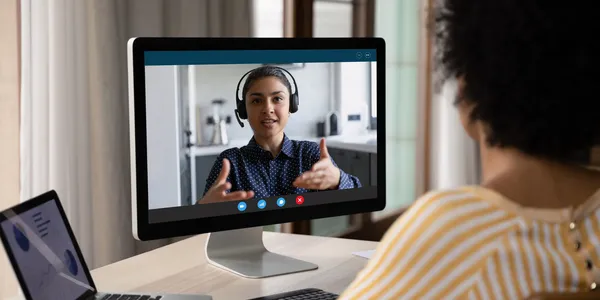The Power of Real-Time Coaching in Today’s Sales World
Sales has always been about timing, but in today’s competitive environment, the timing of feedback is just as critical as the timing of closing a deal. Live sales coaching offers the kind of immediate, personalized guidance that empowers sales professionals to adjust their approach on the spot. Unlike traditional sales training, which often happens after the fact, live coaching takes place during actual calls, meetings, or virtual sessions. This means that sales reps don’t have to wait until the next training to correct mistakes—they can receive valuable feedback while the opportunity is still in progress.
The fast-paced nature of modern business has made it essential to adopt learning systems that match that speed. Static workshops and outdated modules simply can’t keep up with today’s customer expectations or the evolving sales landscape. Live sales coaching bridges that gap by bringing real-time interaction, instant reinforcement, and actionable feedback directly to the salesperson’s experience. It turns every live call into a training moment, creating a culture of continuous growth. The result is not only improved performance but also a more confident and agile sales team ready to handle any conversation.
What Exactly Is Live Sales Coaching?
Live sales coaching is an interactive training approach where sales professionals receive real-time feedback during actual sales conversations. Coaches listen, observe, and guide the salesperson through techniques, responses, and adjustments as interactions unfold. This process can take place via video conferencing, phone calls, or live chat, depending on the sales format. The goal is to provide immediate insight into what’s working, what needs improvement, and how to enhance the overall customer experience.
Live coaching leverages technology to make the process seamless. Sales managers and trainers often use tools like AI-based transcription software, CRM integrations, and live monitoring platforms to assess performance metrics on the spot. This helps pinpoint where a rep is losing momentum or missing cues. Over time, live sales coaching not only builds better conversational skills but also sharpens listening and emotional intelligence—both essential for successful selling. For organizations that value fast learning and measurable outcomes, live coaching has become a cornerstone of performance development.
Core Benefits of Implementing Live Sales Coaching
Businesses that adopt live sales coaching quickly discover that the benefits go beyond improved sales numbers. One of the most powerful advantages is accelerated learning. Because feedback is immediate, sales reps can apply lessons instantly, making retention much stronger. Another key benefit is higher conversion rates, as reps learn to identify buying signals and overcome objections in real-time. This direct improvement in call quality often translates into a faster sales cycle and higher close rates.
Additionally, live coaching enhances communication and confidence. Salespeople learn how to navigate challenging customer interactions while maintaining control and professionalism. The motivation boost that comes from personalized guidance can transform an average performer into a top producer. Teams also experience stronger collaboration since everyone is aligned under a consistent coaching framework.
Some of the biggest benefits include:
- Instant skill correction during live interactions
- Higher customer satisfaction due to refined communication
- Shorter sales cycles and increased deal closure rates
- Greater motivation through ongoing mentorship
- Data-backed insights that help managers identify growth patterns
Live sales coaching delivers a measurable return on investment because it focuses on real, actionable improvement instead of theoretical scenarios.
How Live Sales Coaching Works in Practice
A live coaching session typically begins with the coach observing a sales call or online meeting. They monitor tone, pacing, questioning techniques, and the rep’s ability to respond to objections. During the interaction, the coach may send discreet real-time messages or notes to help guide the salesperson’s next move. Once the call is complete, a brief debrief follows, where the coach reinforces what worked well and suggests refinements for future calls.
The process is dynamic and customized for each individual. Coaches can adapt to a salesperson’s skill level, personality, and learning style, ensuring that every session is relevant and impactful. This hands-on approach helps sales professionals internalize best practices through repetition and feedback loops. Over time, teams develop consistency in messaging and delivery.
A typical live coaching program includes:
- Preparation: reviewing goals and sales scripts
- Real-time observation: monitoring live calls or meetings
- Immediate feedback: sharing prompts during interactions
- Debrief: discussing performance afterward
- Performance tracking: monitoring growth and results through analytics
This combination of live observation and post-call reflection provides a 360-degree learning experience that accelerates mastery.
Common Challenges and How to Overcome Them
Like any performance improvement system, live sales coaching comes with its challenges. Some sales reps may initially resist being observed in real time, fearing criticism or performance anxiety. Overcoming this requires clear communication about the purpose of coaching—it’s not about judgment but growth. Encouraging a culture of trust and psychological safety is essential for success.
Technology can also pose hurdles. Internet connectivity issues, software glitches, or data privacy concerns can disrupt live coaching sessions. Businesses must invest in reliable tools and provide training to ensure smooth adoption. Another challenge is maintaining balance; too much feedback can overwhelm a rep, while too little can lead to stagnation. Coaches should pace their input thoughtfully, focusing on key improvement areas.
To effectively overcome challenges, organizations should:
- Normalize coaching as part of daily work
- Provide consistent reassurance and support
- Use secure and user-friendly coaching platforms
- Focus on growth rather than evaluation
- Track progress to highlight positive changes
When handled correctly, these challenges transform into opportunities for deeper engagement and professional development.
Essential Qualities of an Effective Live Sales Coach
A great live sales coach brings a unique blend of interpersonal and analytical skills. Communication is key; coaches must know how to deliver feedback constructively and at the right time. Emotional intelligence plays a huge role in understanding when a salesperson needs encouragement or correction. Strong observational skills help identify patterns in behavior and performance that others might miss.
Effective coaches also understand data. They rely on metrics like call duration, talk-to-listen ratio, and conversion trends to provide factual, actionable insights. This helps ensure that coaching isn’t based on opinion but on measurable results. Another important trait is adaptability—knowing how to adjust coaching methods for different personalities and experience levels.
A successful live sales coach should have:
- Empathy and patience
- Strong communication and listening skills
- The ability to interpret sales data effectively
- Flexibility to adapt to different learners
- A motivational and supportive approach
When these qualities come together, live coaching becomes a powerful driver of consistent improvement and team morale.
Integrating Live Sales Coaching into Your Organization
Implementing live sales coaching requires thoughtful planning. It starts with selecting the right technology platform that fits your team’s workflow. From there, it’s important to set clear goals—what specific outcomes do you want to achieve, such as higher close rates or improved customer satisfaction? Once objectives are defined, leadership should communicate the purpose of coaching clearly to avoid resistance.
The onboarding process should be simple and supportive. Sales reps should receive hands-on training with the coaching tools, followed by scheduled sessions that align with their regular calls. Managers must monitor progress, provide encouragement, and celebrate improvements to maintain engagement. Over time, the system becomes part of the organization’s DNA—a culture where continuous feedback is embraced.
Key steps for successful integration:
- Choose the right live coaching platform
- Establish measurable goals and milestones
- Train both coaches and sales reps thoroughly
- Encourage open communication and feedback
- Measure ROI and refine the approach regularly
When live sales coaching is fully embedded into company operations, it creates a sustainable loop of performance enhancement and employee development.
The Future of Live Sales Coaching
The next generation of live sales coaching is being shaped by technology and human connection. Artificial intelligence and voice analytics are now helping coaches identify tone shifts, hesitation, and keyword performance during calls. These tools provide deeper insight into customer behavior and allow for faster feedback. As remote selling continues to grow, virtual coaching sessions have become the norm, enabling real-time guidance no matter where teams are located.
Future developments may include predictive coaching, where AI can suggest specific interventions based on performance data trends. Personalized dashboards will give each rep a clear view of their progress, while managers can see team-wide performance metrics. Despite the increasing role of technology, the human element will remain central—empathy, intuition, and real-time understanding will always define great coaching.
Frequently Asked Questions (FAQ)
1. How is live sales coaching different from recorded coaching sessions?
Live coaching happens in real time, offering immediate feedback, while recorded sessions are reviewed later for analysis.
2. What types of businesses benefit most from live coaching?
Companies with active sales teams, such as B2B, SaaS, and retail organizations, gain the most from real-time guidance.
3. How long does it take to see results from live sales coaching?
Results often appear within a few weeks as sales reps begin applying new strategies immediately.
4. Can live sales coaching work for remote teams?
Yes, it’s ideal for remote teams using virtual platforms and live communication tools.
5. What’s the cost range for implementing live coaching solutions?
Costs vary depending on tools, program scope, and coach expertise, but most organizations view it as a high-ROI investment.
Takeaway
Live sales coaching is more than a training trend—it’s a transformation in how sales teams grow, perform, and connect with customers. By combining real-time feedback, data-driven insights, and human empathy, organizations can cultivate a culture of continuous improvement. The result is a more confident, skilled, and motivated sales force capable of achieving measurable success in any market environment.

